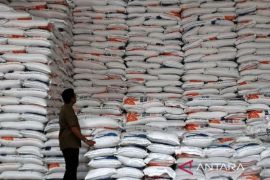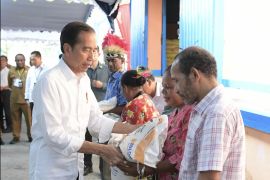"There has been an increase in (the prices of) several basic needs, including rice and sugar. There is another price increase in chilies, but it is still relatively small. It influences inflation," Central Java acting governor Nana Sudjana said.
He made the statement after attending the Regional Coordination and Capacity Building Meeting of the regional inflation control team (TPID) in Semarang on Thursday.
The El Nino phenomenon and drought have contributed to a decline in the production of a number of agricultural commodities, he added.
Moreover, the food crisis in a number of countries has resulted in the tightening of food import policies, which has contributed to commodity price increases, Sudjana continued.
In view of this situation, his administration has devised a strategic policy, which includes disbursing rice from reserves to areas with extreme levels of poverty and facing food insecurity.
Next, the regional government has also intensified the Affordable Food Movement (GPM), which, as of October 6, 2023, has been implemented 445 times in 35 districts/cities, he informed.
The effort has been followed by cutting the food distribution chain by providing transportation subsidies to farmers, livestock breeders, farmer groups, and other food business actors.
As of October 6, the transportation subsidy has reached Rp287.709 million, or the equivalent of 204 tons, Sudjana informed.
In addition, he said that the Central Java provincial government is providing food price subsidies to intervene in food prices and monitor the distribution of government food assistance.
"We have also distributed our rice reserves to districts/cities to stabilize food and rice prices," he added.
His party is monitoring and evaluating the marketing and distribution of crops, especially rice. Based on data from Bank Indonesia's Central Java representative office, only about 20 percent of the crop grown in the region is marketed, while the rest goes to other areas or to food stations.
"Central Java should have had a surplus of rice, but sometimes the rice has been taken by middlemen. This is our homework to involve the farmers in distributing their harvest to the region," he said.
Related news: Ministry promises to reward regions with high rice production
Related news: Indonesia takes steps to counter rice price rise: Bapanas
Translator: Wisnu Adhi N, Resinta Sulistiyandari
Editor: Rahmad Nasution
Copyright © ANTARA 2023












